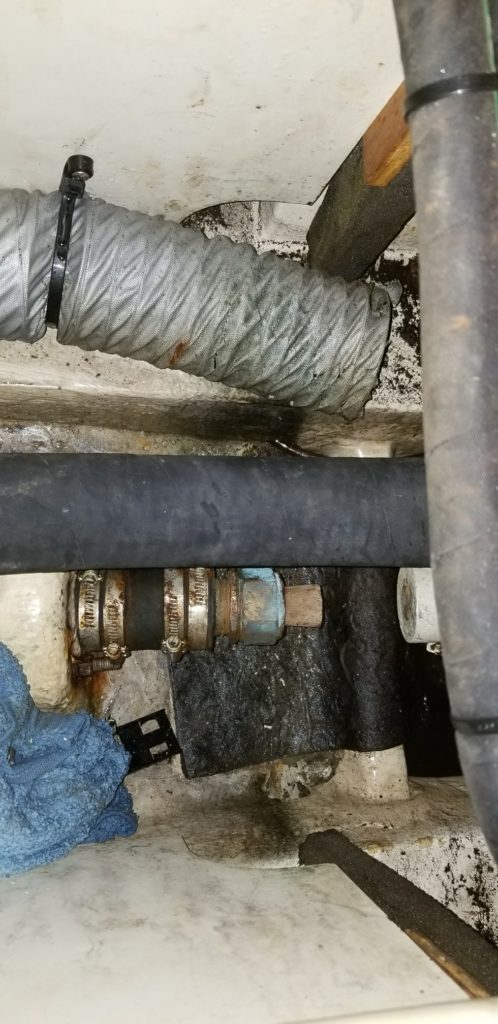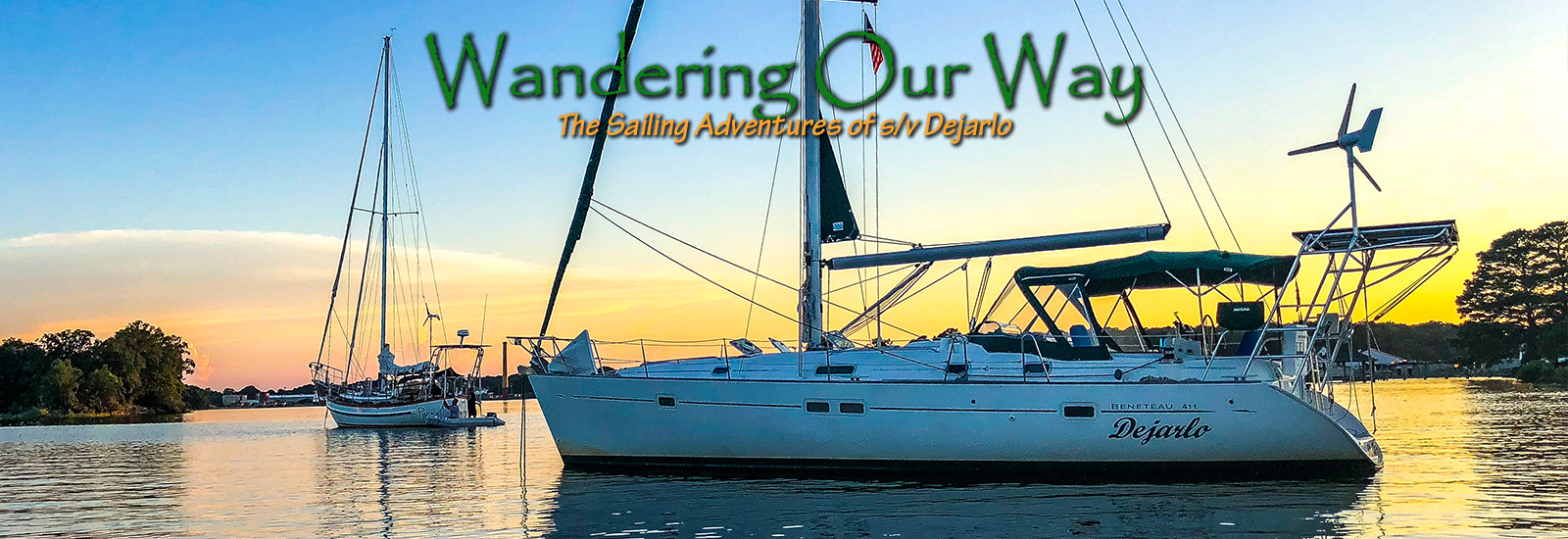“Get Me the Wooden Plugs!”
There we were, on the third day of our four day class. A wonderful day, plenty of sunshine, just enough wind, with smiles all around the cockpit. We had left Dinner Key Marina south of Miami and were headed to Elliot Key, about a twenty mile sail away. We were planning an easy sail, with lots of instruction along the way, a pleasant anchorage off Elliot, swimming in the clear waters, a nice meal aboard, a good night’s sleep, and a nice sail back the Dinner Key the next day.
We were midway along our passage, about six miles off shore in the middle of Biscayne Bay, motor-sailing on a very easy and comfortable broad reach.
Suddenly, we heard a load thump at the stern of the boat. Coming from a Midwestern lake boating experience, I thought we had run over a log. Or maybe we had hit a Manatee. Whatever it was, it was load enough to get everyone’s attention. However, we saw nothing in the water. The engine continued to purr like a kitten, the sails were full, and soon everyone was back to our conversation.
Lambert – a young woman from St. Louis also getting her ASA certifications – was seated on the stern seat. About five minutes later she suddenly pointed out that there was a significant amount of water being pumped out of the back of the boat, the very area of the boat where the bilge pump would eject water from the boat were the boat taking on water. Now everyone is at attention!
About ten seconds later the high water alarm located in the cockpit sounded. OK, now I’m on HIGH alert. Tony, the instructor bounds down the companion way steps and begins taking up floor boards. The bilges are full and water is all the way up to the floor boards! Now I’m really on alert!
I head down stairs to assist Tony in what ever way I can. Peter (Lambert’s father) calmly remains at the wheel and keeps us headed in the right direction. Tony is immediately on the phone with the person in charge of maintenance for this boat inquiring as to what might be the issue. He suddenly dives back into the rear berth area, begins ripping up cushions to gain access to the lower bowels of the boat and the engine shaft area. I observe him hanging upside down in the area behind the engine/transmission where the propeller shaft exits the boat through the sealed shaft stuffing box.
Five seconds later, Tony launches like a rocket up out of the compartment with eyes as big as Sunday dinner plates, looks at me and yells, “get me the wooden plugs!”
Wooden plugs? What wooden plugs? I don’t think we’ve learned about wooden plugs yet, Tony. Did I miss that chapter. Let me run and get my lesson book and refer to my lecture notes.
On second thought, I have a better idea. You go get the wooden plug thingies, and I’ll see what’s going on down in this dark, mysterious propeller shaft compartment that seems to be causing all the commotion.
Tony departs to find the wooden plugs.
At this point Jane joins me downstairs to see if she can assist with the yet undefined problem. I grab a flashlight and stick my head down into the compartment in question only to observe a torrent of water gushing into the boat like in the movie Titanic!
Holy shit, we’re sinking!
Now my eyes are as big as Tony’s! There’s NO propeller shaft! The propeller shaft hole which previously contained a spinning propeller shaft is open to the sea and water is gushing into the boat unimpeded like the working end of a fire hose!
I turn to Jane and yell, “Get me towels!” Seconds later she hands me a couple of towels, and I was able to get enough of a towel and my fingers up the propeller shaft hole to slow the ingress of water. I felt like the proverbial little Dutch boy with his finger in the dike!
A couple of minutes later, Tony returns with an assortment of wooden plugs, some too small for the shaft opening, some too large. However, I was finally able to find one plug about the right size and wiggle it into the shaft opening, stopping the flow water.
 Here’s a picture of the wooden plug inserted into the propeller stuffing box:
Here’s a picture of the wooden plug inserted into the propeller stuffing box:
Needless to say, after the hole was plugged, we were able to pump the water out of the bilge. We had a working engine, but no propeller, so we were forced to return to the marina under sail alone.
So what happened?
For some reason, the propeller shaft detached from the engine coupling. Now, people can debate forever why this would have happened. However, the boat had been in the shop a couple of weeks prior to change out the propeller strut (thus requiring the removal and successful re-installation of the propeller shaft). When the propeller shaft detached from the engine coupling, the propeller shaft and propeller left the boat and sunk to the bottom of Biscayne Bay.
The “thump” we heard at the stern of the boat was the propeller and propeller shaft striking the rudder on their way to the bottom of the bay!
Overall, it was a great learning experience. Everyone remained cool and dealt with the problem. In retrospect, no one was ever in any danger, even had we been forced to abandon the boat and watch it sink. We might have gotten a little wet, but we had plenty of life jackets and the Coast Guard would have plucked us out of the water in short order. As it was, along with Tony’s expert guidance, we sailed back to the marina and put the boat back into its slip.
I think some beers came out after that.
Lessons learned:
- Always be ready for the unexpected
- Always know where the wooden plugs are located!
